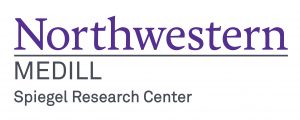At the 2025 AUDIENCExSCIENCE conference, hosted by the Advertising Research Foundation (ARF) on March 25–26 in New York City, leaders in advertising, media, and data science gathered to explore the future of audience measurement. Among the standout presentations was Return on Media, a research study led by the Retail Analytics Council’s Larry DeGaris, Executive Director of the Medill Spiegel Research Center at Northwestern University, in partnership with Antenna, Louisiana State University, and Ed Malthouse, Research Director of Medill Spiegel Research Center at Northwestern University.
Drawing on two years of subscriber behavior data across 11 major streaming video-on-demand (SVOD) platforms—including Netflix, Hulu, Disney+, Max, and others, the study provides clear evidence that actual business outcomes stem from the synergy between paid and owned media. This synergy is not automatic; it depends on specific spend levels and strategy alignment across media types.
“When paid and owned media are aligned—and meet the right thresholds—they don’t just add up, they multiply results,” said DeGaris. “But if marketers overlook those thresholds, they risk wasting budget and even seeing dissynergy.”
Key Insights included:
- Owned media acts as a force multiplier—amplifying the effects of paid media on acquisition, trial conversion, and retention, once specific investment and activity thresholds are met. For example, more than 72 monthly social posts and $5.8 million in digital ad spend significantly boost trial conversions.
- Brands need to spend money on paid media. Owned media can amplify the paid results, but only after spending thresholds are met. Owned media can complement but not replace paid media.
- Owned media amplifies the effectiveness of paid media. After spending thresholds are met, owned media increases the effects of advertising on customer acquisition, trial conversion, and subscriber retention. For new subscriber acquisition, broadcast advertising (combined with daily social posting and a $3.6 million monthly spend) delivered the strongest synergy. For subscriber retention, 52+ owned social posts per month and $1.4 million in broadcast spend enhanced effectiveness.
- Synergy is not guaranteed. Under certain conditions, owned media can reduce the effects of paid media on outcomes. Results vary depending on objectives, channels, and spending levels.
These findings also reinforce what other marketing studies have shown: below-the-line (BTL) channels, including owned media, can more than double the market share effects compared to paid media alone. When brands activate multiple channels in concert, success rates increase dramatically.
This research marks a shift from traditional mix modeling to what the team calls “Promotion Mix Modeling,” a more comprehensive framework that helps brands determine which marketing communications to use, in what combinations, and in what proportions. Unlike traditional models that focus only on paid media, this approach integrates owned, earned, and shared channels to reflect the complexity of today’s marketing landscape.
While based on the streaming space, the implications extend far beyond, especially into retail media, where aligning brand advertising with in-store and owned digital channels is one of the biggest untapped growth opportunities. The call to action: put the synergy back at the center of strategy, across tools, teams, and touchpoints, to unlock the full return on media investments—it’s time to move from silos to synergies.
